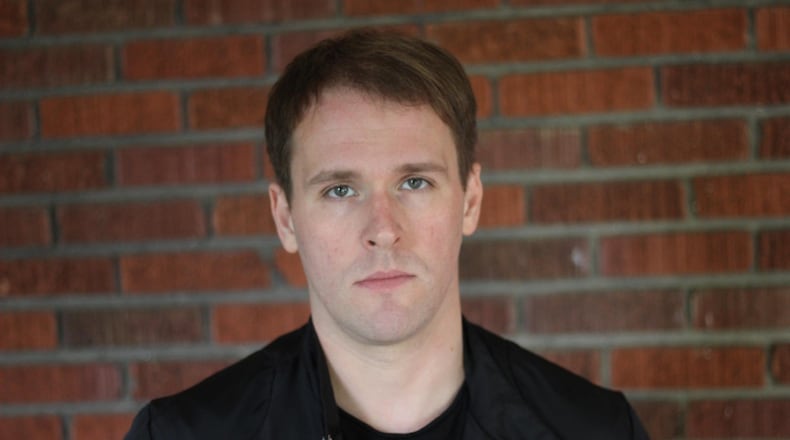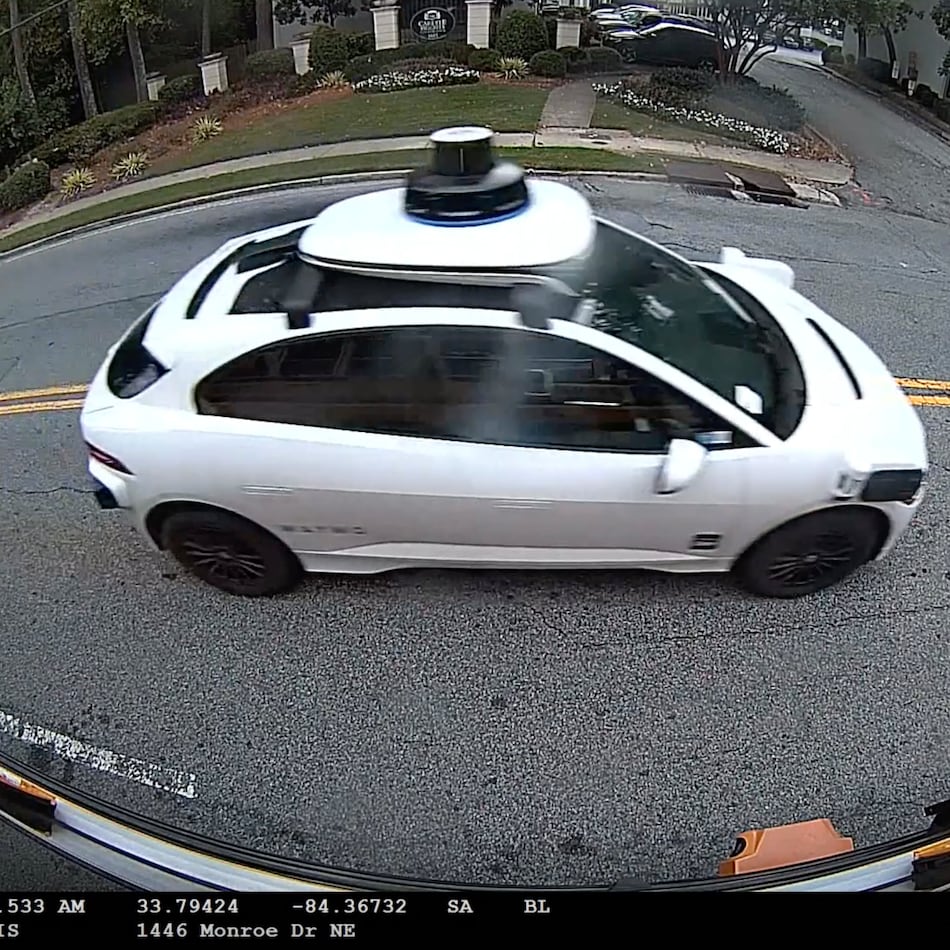“All time thereafter is a gnarl,” writes Blake Butler in his tangle of cosmic pandemonium, “Alice Knott.” (That’s Knott, as in “not,” or negation, or Not-in-Wonderland.) Looping toward infinities of glitch, the book is yet another colossal Einstein chord struck by Butler, author of the strangest fiction Atlanta has ever produced.
For all its sleek neo-Gothicism and terrifying speculation on the remote past and near future of the human mind, “Alice Knott” carries within it the old-style haunting and paranormal shenanigans of a Poe-like captivity tale.
Alice is a reclusive, “aging heiress.” Her biography is a raga of disintegration. Nevertheless, her quest to discover the truth about her schizoid life makes her an heroic figure, even as she endures the horror of mental possession through the disembodied voice of her “unbrother,” Richard, an imprisoned serial killer who manipulates the jumble of family memories inside Alice’s head for some shadowy purpose beyond comprehension.
She has an isolated, tragic childhood. The source of her family’s fortune is obscure. One day, her father (“the one person who loved her more than anyone”) vanishes without explanation. Overnight, he’s replaced by a repulsive “unfather,” likened to a “human tick.”
This “perturbation of continuity” initiates a metamorphosis known as “the shift.” Furniture begins moving around rooms, the dimensions of which also change. Objects disappear.
Alice’s unfather begins reading a 26-volume set of mysterious “black books.” The information within them consumes his being completely, and he dies by his own hand. Alice’s mother perishes of “emotional spontaneous combustion.”
Credit: Hnadout
Credit: Hnadout
Subsequently, by persons unknown, Alice’s inherited “liquid assets” are poured “into aesthetic objects, things no one on Earth but her alone could own,” which is to say that in adulthood she will command a priceless art collection. The paintings are stored in Alice’s basement vault, brightly lit and “blown white.”
Decades later, anti-art terrorists — if that’s what they are — defeat Alice’s security system and videotape the incineration of Willem de Kooning’s “Woman III” (1953), a canvas valued at $137.5 million. Released online, the footage becomes a global sensation. Authorities are summoned and suspicion turns to Alice. She may indeed be the real culprit, but why would she have destroyed a valuable work that she owns?
“Alice Knott” is a pacific, multidimensional meditation. Its serious concerns range from the meaning of “God” (which, in Butler’s imagined universe, corresponds to no presently known belief system) to the obscene value, monetary and otherwise, that we fix upon works of art.
In “Alice Knott,” we discover that our artistic impulse, the “human aspiration,” may simply be a sham we’ve designed to conceal a wrong-turn in the evolution of consciousness: “We slept with such creations hung above our beds … breeding only more amnesia.”
Meanwhile, down in the basement vault, a supernatural mirror appears in place of a stolen Rauschenberg painting. Alice sees the glass shifting her shape into “the other of her … as if she were a different woman through every hour of her life…” Throughout, Butler plays with the thematic possibilities of doubling. Will these two Alices, her divided selves, find a way to meld?
Later, she’s presented with a “deposition” she doesn’t remember giving, in which her other self — a superior voice possibly connected by clairvoyant pathway to her “maybe twin,” Richard — expounds pompously, “my sole desire … is to merge the afterlife with the still living, the future dead; so that we might one day find something to believe in and understand without the heed of our creator, a reason to live long after we’re no longer able.”
And so, “Alice Knott” inches toward its “Twilight Zone” conclusion in the wholeness of the void.
It’s a philosophical novel, though its often unfathomable philosophy makes Ludwig Wittgenstein seem like kid stuff.
The author’s motivation is to make something that has never been before — this is what science fiction writers do, but few assault the limitations of language and the citadel of Reason with the ferocity of Blake Butler, who answers to no one.
He piles non sequitur upon non sequitur until the experimental construct that is “Alice Knott” ravels into bravura contortions of legitimate meaning, decorated with tuts of genius: “In the end, the only way you will ever understand anything is to have never seen it” and “…what is fearsome isn’t actually the hole itself, but what lies at the bottom of that which has no actual bottom.”
It’s not all ponderous. Butler enjoys the prank insertion, as when, out of nowhere, “Stonehenge collapses.” And there are improbable news items, like “the dark object newly rumored to be growing on the dark side of the moon.”
In 1971, the critic George Steiner wrote, “We stand less on that shore of the unbounded which awed Newton, than amid tidal movements for which there is not even a theoretical model.” In tomorrow’s fiction today, the uncertainty of such a model may, in fact, be the model. We don’t yet have a Theory of Everything to resolve discrepancies between the subatomic world and sidereal motion — you know, the bigger picture.
What we do have is Butler’s “gnarl,” so to speak, a location of puzzling quantum glitch where he and his contemporaries, like “Annihilation” author Jeff VanderMeer, allow themselves to flourish.
This place is the forbidden mine of American letters, where our hands run along the phosphor seams of H.P. Lovecraft and Butler’s revered Thomas Pynchon; we guide ourselves to the surface, where, as Butler puts it, even the wind seems different. Just up ahead, in this new world of forgetting and the recovery of what is forgotten, looms the cracked mansion of “Alice Knott,” infernal, confounding, not a book to “unremember” anytime soon.
FICTION
‘Alice Knott’
by Blake Butler
Penguin Random House
320 pages, $28
About the Author
The Latest
Featured



